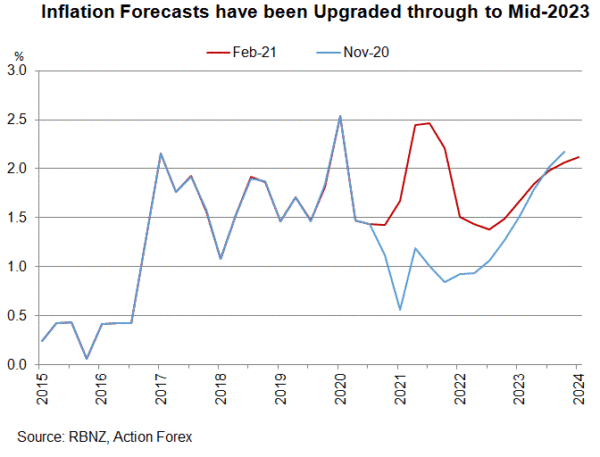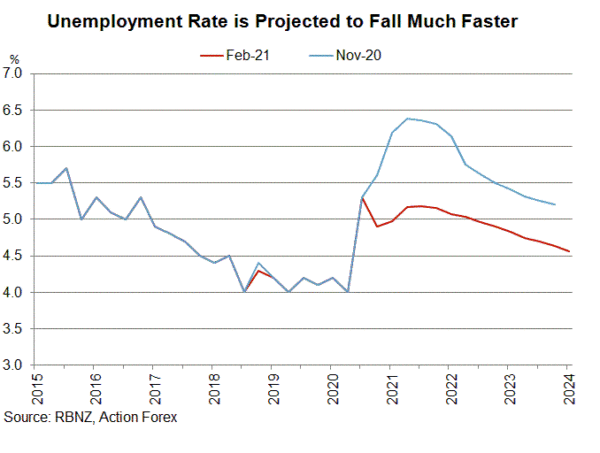The RBNZ delivered a more upbeat statement at today meeting. While leaving the monetary policy measures unchanged and warned of the uneven economic recovery, the staff upgraded the economic projections significantly. Policymakers also introduced a new forward guidance which suggests that policy adjustment will only be made until the job market is very tight.
Policymakers acknowledged the economic improvement since the November meeting. They acknowledged that economic activities have “picked up over recent months”. Meanwhile, “households and businesses also benefited from significant fiscal and monetary policy support, bolstering their cash-flow and spending”. However, they also cautioned that the “lift in activity has been uneven both between and within countries” and “there remains a significant period before widespread immunity is achieved”. The members added that “economic uncertainty will remain heightened as international border restrictions continue” and “ongoing uncertainty is expected to constrain business investment and household spending growth”.


Given these uncertainties, the RBNZ decided to leave all policy measures unchanged with the OCR at 0.25%, the LSAP program at NZ$100B and the Funding-For-Lending program (FLP) remained in place. As we mentioned in the preview, the RBNZ has trimmed its asset purchase in LSAP over the past months. The central bank noted that the reduced buying was due to “reduced government bond issuance” which had placed “less upward pressure on New Zealand government bond yields”. The statement also affirmed the commitment to “continue with the LSAP program with purchases of up to NZ$$100B by June 2022”. Meanwhile it affirmed that “weekly changes in the LSAP do not represent a change in monetary policy stance”.
On the monetary policy outlook, the central bank introduced a forward guidance which revealed that policymakers will be patient in adjusting the policy measures. As suggested in the statement, “the Committee agreed to maintain its current stimulatory monetary settings until it is confident that consumer price inflation will be sustained at the 2% per annum target midpoint, and that employment is at or above its maximum sustainable level”. The central bank also affirmed that “it would not change the stance of monetary policy until it had confidence that it is sustainably achieving the consumer price inflation and employment objectives”. The members expected that “gaining this confidence will take considerable time and patience. While doing so, the Committee agreed to look through any temporary factors driving prices as required by the Remit, and noted that there will be periods during which inflation will be above the 2 percent target midpoint”.













